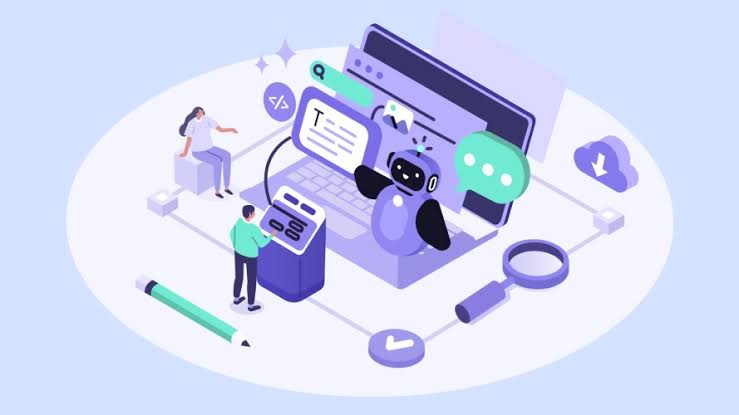How AI-Powered Analytics Are Transforming Businesses in 2025: The role of AI-powered analytics is no longer emerging it’s foundational. From Fortune 500 enterprises to nimble startups, companies across industries are integrating artificial intelligence into their data strategies, not just to understand the past but to actively shape the future. These systems are unlocking insights, automating decision-making, predicting market trends, and reshaping how businesses operate.

AI-powered analytics represents the next evolution of business intelligence (BI), combining machine learning, natural language processing (NLP), and big data technologies to uncover patterns and generate actionable recommendations—often in real time. The result is a shift from static, descriptive reports to dynamic, prescriptive, and predictive decision-making.
What Is AI-Powered Analytics?
AI-powered analytics is the use of artificial intelligence technologies—such as machine learning (ML), deep learning, NLP, and advanced statistical algorithms—to analyze data and extract meaningful insights. Unlike traditional analytics, which often relies on predefined queries and dashboards, AI systems can:
- Learn patterns in data without explicit programming
- Make predictions or suggest actions
- Continuously improve over time
- Automate analysis at scale and speed
In essence, AI-powered analytics transforms massive, often unstructured data into real-time intelligence, helping businesses become proactive rather than reactive.
How AI-Powered Analytics Is Revolutionizing Business Functions
1. Marketing & Customer Engagement
AI analytics is revolutionizing how marketers understand and reach their audience. It goes beyond demographics and simple A/B testing to deliver hyper-personalized content and customer journeys based on behavior, sentiment, and predictive modeling.
- Use Case: An AI system analyzes a customer’s behavior, purchase history, and real-time browsing data to predict what product they’re most likely to buy next—and delivers a personalized email or ad accordingly.
- Impact: Increased engagement rates, reduced churn, and better ROI on campaigns.
2. Sales Forecasting & Lead Scoring
Sales teams now rely on predictive analytics tools that forecast deal closures with high accuracy. AI can analyze CRM data, communication patterns, and customer interactions to score leads, recommend next steps, and predict revenue.
- Use Case: A SaaS company uses AI to identify which leads are most likely to convert and when, optimizing follow-up timing.
- Impact: Improved conversion rates, better pipeline visibility, and smarter resource allocation.
3. Supply Chain & Inventory Optimization
Supply chains, long plagued by volatility, have become smarter with AI. Algorithms can detect disruptions, forecast demand with real-time data, and suggest logistics or stock adjustments.
- Use Case: A retailer uses AI to predict demand surges (e.g., seasonal or weather-related) and automatically adjusts inventory levels.
- Impact: Reduced stockouts, lower holding costs, and faster delivery times.
4. Finance & Risk Management
AI analytics in finance is helping companies detect fraud, manage risk, and optimize cash flow. AI models can flag unusual transactions in milliseconds and predict potential financial downturns using macroeconomic indicators.
- Use Case: A bank uses AI to monitor millions of transactions for fraud while providing real-time credit scoring for loan applicants.
- Impact: Lower fraud rates, faster decision-making, and more accurate financial planning.
5. Human Resources & Talent Management
From hiring to retention, AI is transforming HR. Systems can screen resumes, assess employee sentiment from internal communications, and predict attrition risks.
- Use Case: An AI tool scans employee feedback and productivity metrics to identify teams at risk of burnout or disengagement.
- Impact: Improved retention, smarter hiring decisions, and better employee experiences.
6. Product Development & Innovation
AI analytics empowers R&D and product teams with insights from customer feedback, competitor analysis, and usage data. It helps companies prioritize features, spot bugs, and respond to market needs faster.
- Use Case: A tech firm uses AI to mine app reviews, identifying common pain points and feature requests to guide roadmap planning.
- Impact: Faster innovation cycles and higher customer satisfaction.
Key Technologies Powering AI Analytics in 2025
Natural Language Processing (NLP)
NLP allows machines to understand and generate human language, enabling tools like conversational analytics, sentiment detection, and smart report generation.
Machine Learning (ML)
ML algorithms detect patterns in massive datasets without being explicitly programmed—ideal for predicting outcomes like churn, demand, or fraud.
Computer Vision
In fields like manufacturing and retail, computer vision turns visual data (images, videos) into actionable insights—e.g., quality control, shelf inventory tracking.
Automated Machine Learning (AutoML)
AutoML lets non-data scientists build predictive models by automating feature selection, model tuning, and validation democratizing AI across teams.
Digital Twins
In manufacturing and logistics, AI-driven digital twins replicate real-world systems for simulation and optimization in real time.
AI Analytics in Action: Industry Examples
Healthcare
Hospitals use AI analytics to predict patient admission rates, optimize staffing, and detect anomalies in radiology scans.
Result: Reduced wait times and early disease detection.
Retail
E-commerce platforms track user clicks, dwell time, and previous purchases to offer real-time recommendations.
Result: Higher average order value and customer satisfaction.
Aviation
AI predicts equipment failure and flight delays by analyzing sensor and weather data.
Result: Lower maintenance costs and fewer delays.
Finance
Wealth management platforms use AI to analyze investor behavior, market trends, and risk profiles to recommend portfolios.
Result: Better investment outcomes and customer retention.
READ ALSO: How AI is Shaping the Future of Cloud Storage in 2025
Benefits of AI-Powered Analytics
- Real-Time Decision Making
Insights aren’t delivered days later—they’re surfaced in real time, allowing faster pivots and immediate action. - Scalability
AI can process millions of data points across sources, something manual analysis would take months to complete. - Predictive and Prescriptive Capabilities
Go beyond “what happened” to “what will happen” and “what should we do?” - Reduced Bias
While human analysts bring intuition, AI can offer data-driven objectivity—especially when trained with diverse datasets. - Cost Efficiency
Automated data processing reduces dependency on large analytics teams for routine reporting tasks.
Challenges and Considerations
Despite its power, AI analytics isn’t without pitfalls.
- Data Quality: Poor or biased data leads to poor predictions. Data governance and cleansing remain essential.
- Interpretability: Complex models can become “black boxes.” Businesses need explainable AI (XAI) for transparency and trust.
- Privacy & Ethics: Handling sensitive data, especially in finance or healthcare, raises concerns around consent, bias, and data protection.
- Change Management: Adopting AI requires shifts in workflows, culture, and training.
FAQs
How is AI analytics different from traditional business intelligence (BI)?
Traditional BI relies on static dashboards and descriptive statistics to analyze past data. AI-powered analytics adds machine learning and automation to make real-time predictions and suggest decisions—transforming BI from backward-looking to forward-thinking.
Do I need a data science team to use AI analytics?
Not necessarily. Thanks to AutoML platforms and user-friendly interfaces, even non-technical teams can build and use AI models. However, having data science expertise can help fine-tune models and ensure ethical usage.
Is AI analytics secure?
Most enterprise-grade AI platforms follow strict security protocols, including encryption, access controls, and audit trails. However, businesses must ensure compliance with data privacy laws like GDPR and CCPA.
Can small businesses benefit from AI analytics?
Absolutely. Many SaaS-based AI analytics platforms offer scalable solutions tailored for SMBs. From customer segmentation to sales forecasting, even small businesses can leverage AI to compete effectively.
What are the risks of using AI-generated insights?
Overreliance without human oversight can be risky. AI might misinterpret data due to biases, poor training, or lack of context. That’s why explainable AI and a human-in-the-loop approach are critical.


